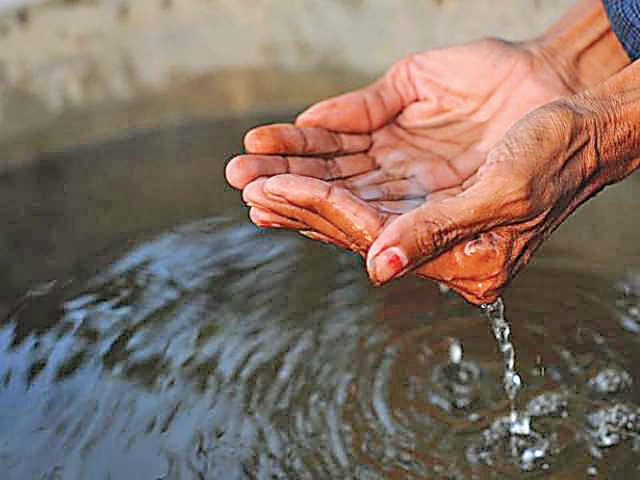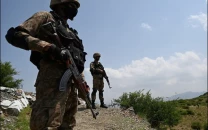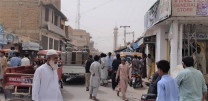K-P stares at water crisis
People walk for miles carrying pitcher on head

Containers in tow, the women of Islam Ghut have to walk several kilometers in search of the luxury commodity that is water as the natural springs they once depended upon have disappeared over the year.
With a population of roughly 1,102 people, Islam Ghut, a village, is amongst the areas worst affected by the prevalent water crisis in the Bajaur district of Khyber-Pakhtunkhwa (K-P). Uzma, a 16-year-old girl from the village, who has to carry the water container on her head for over 2 kilometers to fulfill the needs of her family, remarked that it was a very difficult process but there was no alternative. Similarly, Muhammad Tahir, a local resident concurring with Uzma’s assessment, told The Express Tribune that more than 15 natural springs have dried up in our village and now we have only 5 left. “People have started drilling now but the water level is very low and drilling often fails,” he stated. Tahir further informed that people dig wells and then run them on a solar system, which costs anywhere between a hefty Rs 1 million to 1.2 million.
In Bajaur, the groundwater level has gone down by 32 feet, and the growing fear amongst officials and residents alike is that if it keeps declining at the same pace then a drought is imminent. However, Bajaur is not the only district in K-P that may be headed for a major humanitarian catastrophe if the water crisis worsens.
Documents submitted to the Senate by the Ministry of Water Resources reveal that groundwater in 28 districts of K-P is rapidly declining out of which the level in 5 districts is dangerously low - in the last decade the groundwater level has dropped by 25 to 74 feet. According to the written reply, the worst-affected district is Khyber, where groundwater has receded to 74 feet, Haripur district is in second place where groundwater has gone down to 62 feet. In third is, Mohmand district, where the groundwater level has dropped to 57 feet. Bajaur district is in fourth, followed by Kurram district, in fifth, where the groundwater level has dropped to 26 feet.
Habib-ul-Hassan Yadav, a social worker from Bajaur district, commenting on the district’s struggle with water, said that wastage of water in the entire province is responsible for Bajaur and other district’s ordeal. “For instance, in rural areas clean water is used extensively for irrigation and the farmers do not know which crop needs how much water so they end up wasting an immense amount of water,” he said. Yadav suggested that we need to improve our irrigation techniques and educate farmers on which crops to plant.
Not only humans
However, Bajaur’s water problems are not limited to humans either due to the effects of climate change; the district’s fishing industry is under serious threat. Muhammad Riaz, a research officer at the Department of Fisheries in Bajaur, told The Express Tribune that their department had set up 26 model fish farms in 2017 to promote the fishing industry and 10,000 fish were released into them. “However, due to depletion of water, 23 fish farms were forced to close down and now only 3 farms are currently operational. The total loss we incurred was Rs 6.9 million,” Riaz informed.
Prevention measures
Commenting on the provincial government’s efforts to combat the troubling depletion of the water level in K-P, Hayat Ali, a senior official of K-P’s Forestry Department, said that the present government has taken steps to raise the water table and work is underway on 70 to 80 small and large dams. “Five of them are big dams and after their completion the water level will rise. The Raghgan Dam established in Bajaur District is a living example of this. In the area where Raghgan Dam has been established, the water level has risen,” Ali told The Express Tribune.
Published in The Express Tribune, February 8th, 2022.



















COMMENTS
Comments are moderated and generally will be posted if they are on-topic and not abusive.
For more information, please see our Comments FAQ